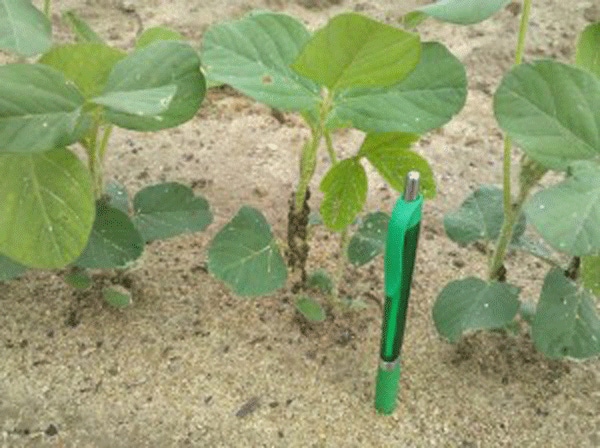May 16, 2012

Kudzu bugs are a new pest from China and though they are spreading rapidly from south to north, heavy populations apparently have decided to stay in South Carolina.
Last year Clemson University Entomologist Jeremy Greene found the tiny bugs in large numbers late in the year on soybeans, but not on early planted beans.
This year is a different story. “We have started observing eye-catching populations of kudzu bugs on early-planted soybeans in South Carolina, and similar observations are being made in other states.
“Earlier this week, I found heavy populations of kudzu bugs on soybeans planted April 20. We saw these bugs early in the year last season, but not on soybeans,” he explains.
Greene offers two ways to manage early season insect pests.
One, you could decide to spray at this level of adults. If you do that and follow that guideline, you might end up spraying every week or two.
Or, you could wait and risk losing yield.
“If you spray now, re-infestations can happen very quickly. We think these are over-wintered adults that will not live very long. They are laying eggs on the plants, so we will need to monitor those developing nymphs for survival and treat them accordingly. The right response may be to spray every week.
“If you delay in treating, you may lose yield and at $15 or so a bushel, a little yield loss could mean a lot of money.”
Greene says, “We don’t know at this point whether there will be yield loss associated with kudzu bug damage. All of the data we collected last year indicated that reproducing populations and nymphs were key to yield loss in soybeans. But that was with an infestation that developed much later than what we are seeing so far this season.
“We are just going to have to learn to live with some level of adults infesting our soybeans…no way around that. You cannot eliminate them from a field and keep them out.
“If these are over-wintered adults, and we think that they are, we can probably let these early infestations go for another week or so and see what happens,” Greene says.
Technically the kudzu bug is Megacopta cribraria, and is known in most parts of the world as the bean plataspid, and in some areas as lablab bugs. The bugs, which look like boxy brown ladybugs, emit a foul-smelling secretion when threatened.
The bean plataspid is native to India and China and is found in most soybean production areas of Asia. The insect is pea-sized, greenish brown, and round with a wide posterior. It appears to waddle when it walks on a surface and is an excellent flier. Its flying ability helps account for its rapid spread across the Southeast.
The Clemson entomologist urges growers to be patient in dealing with these new pests. He stresses that researchers basically have only the 2011 growing season to observe and make decisions on how best to manage kudzu bugs.
(Kudzu bugs are also being found in North Carolina soybeans. For an update on that situation, see Kudzu bug eggs found in North Carolina soybeans).
About the Author(s)
You May Also Like






